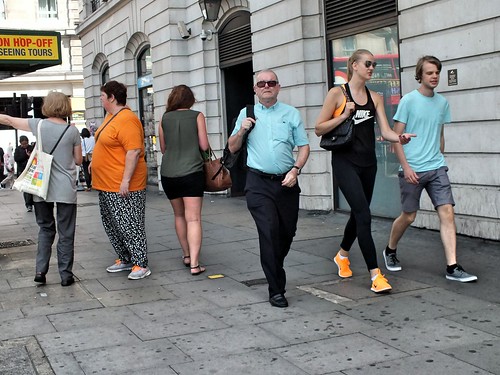Got rice? Londoners stockpiling pantry staple amid Indian rice export ban
Londoners #Londoners

The Indian government’s decision to ban exports of non-basmati rice to protect their domestic supply and lower prices has had far-flung consequences that reach all the way to London, Ont.
While store owners and restaurateurs grapple with increasingly tighter margins and supply, consumers are having to pinch pennies and make purchases outside of their preferences.
Some, like Londoner Jose Thomas, have even resorted to stockpiling the types of rice they prefer.
“We stocked two or three bags now, and we don’t know when more will be coming and how long [the ban] will be there,” said Thomas.
He prefers a type of rice called matta, which is widely used in the southern Kerala region of India, where he is from.
Since the export ban was announced, he and others close to him have been buying up bags of their favourite products and bracing for the eventuality of having to buy basmati rice, which isn’t affected by the ban and is a pricier, premium option.
Mixed with already increasing rice prices due to scarcity, that means the average meal is going to be considerably pricier for Thomas and his family, who eat rice two to three times a day.
“Once we heard about this news all of us were running to the store to stock more rice. I think it was around 22 dollars per 10 kilos and it increased to 30 dollars,” he said.
Jose Thomas is a Londoner from Kerala, India. He told CBC News the first thought that crossed his mind when hearing of the export ban, was getting to the store and securing a supply of his favourite rice for his family. (Alessio Donnini/CBC News)
Panic buying and tight supply isn’t just a problem for consumers. Suppliers are feeling the strain too.
London’s numerous south and east-Asian grocery stores are facing fewer choices, and as a result, frustrated customers.
“This shortage is huge. A lot of our customers, they’re big on rice, and then every demographic has its own specific [type of] rice that it goes to,” said Mamta Upadhyay, who recently took ownership of Fresh Indian Grocery in east London.
With the knowledge that customers may be keen on stockpiling rice, her store — like many others — has decided to limit customers to one bag of rice per family.
“There’s a limit on rice everywhere just because we don’t know what the how big this is going to be,” she said.
Basmati rice, one brand of which is pictured here, is the only type of rice not affected by India’s export ban. It’s considered a premium product, which means it costs more, especially due to generally inflated rice prices. (Alessio Donnini/CBC News)
Saroj Kumar Chetri, the owner of Nepali Bazaar, reported similar levels of panic buying in other stores.
“We had two pallets of Sona Masuri rice. It was gone in one day,” he said, adding that prices from his suppliers have gone up as a result of the export ban.
He refuses to up his prices, which means while some stores in the GTA are selling bags of rice for as much as 48 dollars, he is choosing to absorb the added expense.
“I don’t like that kind of business,” he said.
Also absorbing heavy expenses are South Asian restaurants like Punjabi Rasoi.
“All of a sudden you start seeing a rise in the prices of a raw material, right? And the common man is the first one who who suffers from that,” said Aman Dhaliwal, the owner of Punjabi Rasoi.
She’s been running the restaurant since 2017, and says there hasn’t been any breathing room since her business survived the COVID-19 pandemic.
She’s had to increase her prices because of the skyrocketing cost of food in general, which has meant a 40 per cent loss in business.
Aman Dhaliwal is the owner of vegetarian restaurant Punjabi Rasoi in east London. She says the skyrocketing price of rice has resulted in fundamental changes to how she runs her business. (Alessio Donnini/CBC News)
With the price of rice — an important component of many dishes — increasing as well, all Dhaliwal can do is hope that the export ban is short-lived.
“This week when we go back to our wholesaler, certain items will not be coming in for the next couple of months,” said Dhaliwal, who has had to cut working hours and employ other cost-saving measures to stay afloat.
“Some people don’t have money to even buy [rice] for weekly groceries anymore.”
Indian rice exports account for more than 40 per cent of rice exports worldwide.
The country’s move to ensure domestic supply is the second major announcement from a major exporter this year. In May Vietnam announced plans to limit its own exports to four million tonnes a year by 2030.